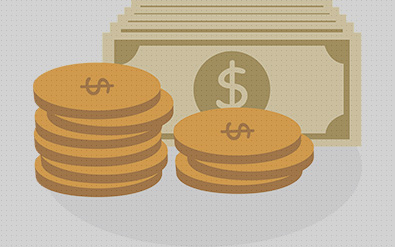By Jon Lavietes, Senior Associate
There is a feeling among many economists that economic growth will soon cease, and that we will find ourselves in the midst of a major recession in 2020 or as early as this year, depending on whom you ask. Like every other industry, PR agencies and corporate communications departments will experience budget cuts and downsizing if this is the case.
While much of the fallout of an economic downturn can’t be avoided, we will still need to plead our cases to purse string pullers to retain our budgets or cut less than they might have originally planned. Here are a few essential points to argue that apply to just about every corner of the public relations sector.
You’ll lose momentum
CEOs are often leading companies for the first time in their careers — this is particularly true of startups — and if they haven’t experienced a PR program firsthand as a publicist, a spokesperson or a client — marketing people often serve as the first point of contact in smaller organizations that can’t afford a full-time PR manager in house, for example — they tend to have many misconceptions about how the process works.
For instance, many don’t realize that they can’t just turn it on and off like a light switch. We’ve had clients come to us after a two-year layoff from PR activity and wonder why business press didn’t immediately resume covering them, or why they had to re-establish their value proposition and elevator pitch with analysts. They had no idea they couldn’t just pick up right where they left off after going dark for so long. It doesn’t mean companies can’t work their way back onto the public’s radar, but two years is an eternity in today’s business world, particularly in tech where consumers are upgrading to their next smart phone and the next big thing in the enterprise is now standard, if not passé, by then.
PR is still cost-effective
Much ink has been spilled over the decades about how PR is more valuable than advertising, so we won’t spend too much time rehashing the basic bullet points. All you need to know is that an independent, unpaid, nationally recognized expert’s discussion (and hopefully praise) of your company carries significantly more credibility than a message your organization paid for — according to a Nielsen/inPowered study, PR is 90 percent more effective than advertising in influencing the consumer decision-making process. That, and PR tends to be way cheaper. One Forbes contributor tells of a client who paid $125,000 for a full-page ad in a major newsweekly. PR firms can be pricey but you generally get much more than a single tangible item for that price.
But the real value of public relations vis-à-vis advertising is that PR success can beget more success, sometimes to the point where you don’t have to keep pumping more money and effort to keep the results coming. Get on the radar of a handful of influential reporters in the trades and business press, and their peers may start to pick up on you. Next you thing you know, you’re getting inbound requests from BusinessInsider and outlets of similar caliber.
True, there are cases where exceptionally creative ads go viral, but for the most part advertisers’ output is dependent on continuous monetary investment. Or put another way, ads cease appearing once you stop paying for them. In a recession, you may want to keep your money in something that can potentially drive additional value without requiring more resources.
All facets of communications feed off of each other
This isn’t to universally disparage advertising. In truth, it is and always will be an important prong of a broader communications strategy. In fact, all communications vehicles build off each other — Nike’s recent initiative with Colin Kaepernick is a great example of how an advertising campaign enhanced PR efforts and vice versa. Companies that achieve the Holy Grail of symbiosis between PR, advertising and marketing get exponential value out of all three that couldn’t be achieved by either in a vacuum.
So when your client’s CEO makes the case that its company can more finely target audiences, operate at a smaller scale and ignite viral marketing efforts through social media campaigns — attributes that are more suitable to a reduced communications budget — the head executive is right in many respects. In that regard, this finely personal touch social media efforts provide might make it a good buy in a slower economy, especially when you consider that 92 percent of consumers around the world say they trust recommendations from friends and family, according to Nielsen.
However, in the best social media campaigns, you usually see traditional media and grassroots marketing building off each other. For example, an event, issue or product might go viral on YouTube, Facebook and/or Twitter, which catches the eye of a top-tier reporter who ends up reporting on the rising hubbub. The coverage, in turn, quintuples the social media mentions, which forces more journalists to take a look at the trend. Initial word-of-mouth social media outreach kindles the initial fire, traditional media throws gasoline on it, thereby allowing social media to light new paths in the forest where another wave of media gasoline spreads it farther and faster than a few more bits of brushwood can take it. Before you know it, you have a raging inferno!
Nevertheless, come the next market contraction, reductions in budget, staff, resources and even clients will be inevitable for many in our field. However, companies that cut back too much in the short term oftentimes suffer the consequences. It’s up to PR practitioners to make executive leadership understand the risks of letting competition keep their fire bright in the public eye while they go dark. Organizations that let the PR embers burn out will find that business can be a cold world.



